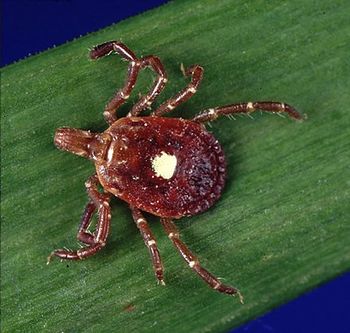
- February 2018
- Volume 3
- Issue 1
5 Emerging Infections to Watch Out For in 2018
These pathogens can cause unique challenges for clinicians.
The world of infectious diseases is dynamic, with threats that vary temporally, geographically, and by practice setting. The objective of this article is to highlight notable pathogens that may be relevant for infectious diseases clinicians in the United States in 2018. To provide a clinical and not purely epidemiological perspective, the diseases were considered on the basis of their unique and potentially alarming features in addition to changing incidence. This year, the infectious diseases community should watch out for:
CANDIDA AURIS
Candida auris (C. auris) is an emerging fungal species that has been identified as the causative pathogen in an increasing number of invasive fungal infections.1 It is unique among Candida species in that it is often multidrug resistant, is challenging to identify through the yeast identification methods used in many clinical microbiology laboratories, and is prone to causing outbreaks in health care facilities because of its ability to persist on environmental surfaces after application of quaternary ammonium disinfectants.1-3
Since its initial identification in Japan in 2009, C. auris has spread through international travel to several countries. In the United States, 203 C. auris cases have been reported as of December 2017.1 The geographic distribution in the United States demonstrates a predominance in New York and New Jersey, but fewer cases in Illinois, Massachusetts, and Florida. C. auris is associated with invasive infections and a high mortality rate, particularly from bloodstream infections in patients with serious underlying comorbidities and indwelling devices.4 Most isolated strains of C. auris in the United States are resistant to azoles but susceptible to echinocandin antifungals, although treatment-emergent echinocandin resistance has been reported.5 Echinocandins remain the empiric treatment of choice for suspected C. auris infection.
Given the serious implications for both patient care and infection control, the US Centers for Disease Control and Prevention (CDC) provides support and recommendations for the identification of C. auris in clinical laboratories.6 In addition to species-level detection from sterile sites, the CDC recommends that Candida identified in nonsterile sites be identified to the species level in patients with potential risk factors for C. auris infection or in facilities with known C. auris cases. C. auris should be suspected among patients who have experienced an overnight admission to a health care facility in affected regions, including India, Pakistan, South Africa, Kenya, Columbia, and Venezuela.4,7 Because of structural similarities and omission from current databases, C. auris is commonly misidentified by biochemical identification systems; for example, Microscan results may indicate C. lusitaniae, C. guilliermondii, C. parapsilosis, or C. famata, and Phoenix results may indicate C. haemulonii or C. catenulata.6 Furthermore, clinical laboratories utilizing matrix-assisted laser desorption ionization/time of flight may require research use-only databases to accurately identify C. auris. Facilities are encouraged to work with their local health departments if C. auris is suspected and to review recommendations specific to their diagnostic platforms if unusual Candida species are identified.
ELIZABETHKINGIA ANOPHELES
Elizabethkingia anopheles (E. anopheles), a common environmental Gram-negative bacilli, caused an outbreak of infections in the Midwest between 2015 and 2016 that affected at least 65 patients.9 Although this outbreak was contained, the event is notable because it was almost exclusively community acquired without a definitive source.8 Furthermore, although E. anopheles is typically not highly pathogenic, the strain in question was associated with a relatively high mortality rate in immunocompromised patients and was determined to be a novel mutant strain containing multiple resistance mechanisms.9 Clinicians should be aware that many clinical laboratories cannot distinguish E. anopheles from E. meningoseptica and be alert to the possibility of an outbreak related to the sublineage described in the Wisconsin-based outbreak.
Empiric treatment of E. anopheles strains suspected to be related to mutant strains may include sulfamethoxazole-trimethoprim or a quinolone. Strains from the Midwest outbreak were resistant to ceftazidime, imipenem, and most aminoglycosides. Piperacillin-tazobactam susceptibility was variable in studies.7,9
PLASMID-MEDIATED POLYMYXIN RESISTANCE (MCR-1)
Although antimicrobial resistance has been considered an urgent public health threat by the CDC for several years, the emergence of plasmid-mediated colistin resistance in human pathogens is particularly alarming because of its transferrable nature and its specificity for a last resort antibiotic. To date, a number of variants of the mobilized colistin resistance (mcr) gene have been identified as a mechanism of resistance in Gram-negative isolates.10 MCR-1 is the gene implicated in human infections, including published clinical cases in the United States involving Escherichia coli (E. coli) concurrently with the ESBL genes CTX-M-55 and SHV-12.11,12
MCR genes were first identified in animal surveillance studies in China and have henceforth been proved in animals throughout the world.13,14 In addition, human isolates expressing mcr genes have now been discovered in several US states, including Texas, Wisconsin, California, Oregon, Washington, and several in the Northeast (New York, Pennsylvania, Massachusetts, Connecticut, New Jersey and Maryland). Human isolates were also found in Virginia, Tennessee, Michigan, and Minnesota.15 The available literature suggests widespread geographic involvement, susceptibility of multiple genera of Enterobacteriaceae, potential avian-human transmission from food sources, and, most feared, rare coexistence with carbapenemase genes.12,16,17
Transfer of mcr-1—containing plasmids to carbapenem- resistant Enterobacteriaceae has the potential to lead to truly pan-resistant infections with dire consequences. Treatment options for such pathogens would be experimental at best, based on in vitro data examining bacterial kill with different combinations of antimicrobials.18 In a recently published study utilizing a hollow-fiber infection model, the combination of amikacin, aztreonam, and polymyxin B was the most effective combination against E. coli coharboring MCR-1 and blaNDM-5.18 Research into therapeutic options and prevention of MCR-1 transfer are high priority research areas in the coming year.
VECTOR-BORNE DISEASES: THE LONE STAR TICK
Amblyomma americanum (A. americanum), colloquially referred to as the Lone Star tick, is characterized as an especially aggressive tick inhabiting the southeastern and eastern United States.19 Lone Star ticks have been associated with transmission of Ehrlichia spp., which causes human ehrlichiosis, Heartland virus, tularemia, and southern tick-associated rash illness.19 Recently, a CDC investigation of ticks collected in northwestern Missouri suggested that A. americanum is also a vector of Bourbon virus to humans.20
Bourbon virus clinical infections remain exceedingly rare, having been definitively identified in 5 individuals since the first reported case in Bourbon County, Kansas, in the spring of 2014.21 The most recent report of Bourbon virus infection occurred in the summer of 2017, afflicting an employee of a state park in Missouri.22 Of particular concern, Bourbon virus has been rapidly fatal in immunocompetent adults, with no known cure and with a variable prevalence among ticks within the affected geographic area.20,21 Health care providers may suspect Bourbon virus among patients in the Midwest who experience fever, thrombocytopenia, and leukopenia after recent tick exposure and who test negative for other known tick-borne illnesses.
Heartland virus infections are relatively more common, with over 30 reported cases occurring in the midwestern and southeastern United States as of July 2017.23 Similar to Bourbon virus, Heartland virus should be suspected in tick-exposed patients in affected geographical areas who present with fever, fatigue, nausea, diarrhea, and anorexia that do not respond to treatment with doxycycline. Rarely, Heartland involves thrombocytopenia, leukopenia, and transaminitis.23 Clinicians should be aware that evidence of Heartland virus in wildlife has been discovered in wide geographic areas of the South and Northeast, indicating that it may be more prevalent throughout the eastern United States than previously believed.24
ZOONOTIC FLU VIRUSES
Zoonotic flu viruses are not a new human threat, with various hosts assuming a position of risk over the years. Persistent zoonotic influenza threats include highly pathogenic strains of avian H7N9, H5N1, and H5N6, and swine influenza viruses H1N1, H1N2, and H3N2.25 Avian cases have occurred in patients with close contact with poultry, particularly in Africa, Europe, and Asia where influenza H5 subtypes are commonly identified in birds. Human-to-human avian influenza transmission is thought to be unlikely based on epidemiological and virologic evidence. Swine influenza cases continue to be reported in the midwestern and western United States among patients with direct exposure to swine; a recently reported case suggests that limited human-to-human transmission of influenza H3N2 may be possible.25
A potentially emerging zoonotic influenza strain to watch for is avian influenza H7N2, given its demonstrated ability to infect humans in contact with infected domestic animals.26 The vast majority of previous human infections with avian flu viruses resulted from direct contact with infected birds. The reported case of human H7N2 affected a veterinarian who had close unprotected exposure with H7N2-infected cats at an animal shelter in New York City.26,27 Investigations into the outbreak suggest that human transmission risk is low, however, and that the disease is generally self-limiting, but the possibility of a more widespread problem must be considered in light of the unique transmission history.
Diseases of concern for US infectious diseases clinicians in the coming year are difficult to predict, but historic data suggest continued heterogeneity in the types and presentations of emerging pathogens. Atypical vectors, such as Lone Star ticks harboring novel viruses and domestic felines harboring avian influenza, must be considered. Previously unknown pathogens, such as C. auris and Gram-negative organisms expressing MCR-1 colistin resistance, will require particular diligence from both clinicians and clinical microbiologists. Hopefully, the lessons learned from recent infections with C. auris, E. anopheles, MCR-1—mediated colistin-resistant E. coli, Bourbon virus, and avian influenza will prepare health care providers for future threats.
Dr. Bunnell is an assistant professor of clinical sciences at the Medical College of Wisconsin Pharmacy School in Milwaukee, Wisconsin, where she teaches infectious diseases and critical care pharmacotherapy and practices in critical care at Froedtert Hospital. She recently completed an infectious diseases fellowship at the University of Illinois at Chicago College of Pharmacy. She is an active member of SIDP.
References:
- Candida auris. CDC website. cdc.gov/fungal/diseases/candidiasis/candida-auris-qanda.html. Accessed December 8 2017.
- Candida auris clinical update—September 2017. cdc.gov/fungal/diseases/candidiasis/c-auris-alert-09-17.html. Accessed December 8, 2017.
- Cadnum JL, Shaikh AA, Piedrahita CT, et al. Effectiveness of disinfectants against Candida auris and other Candida species. Infect Control Hosp Epidemiol. 2017;38(10):1240-1243.
- Tsay S, Kallen A, Jackson BR, Chiller TM, Vallabhaneni S. Approach to the investigation and management of patients with Candida auris, an emerging multidrug-resistant yeast. Clin Infect Dis. 2017.
- Tsay S, Welsh RM, Adams EH, et al. Notes from the field: ongoing transmission of Candida auris in health care facilities - United States, June 2016-May 2017. MMWR Morb Mortal Wkly Rep. 2017;66(19):514-515.
- Recommendations for the identification of Candida auris. CDC website. cdc.gov/fungal/diseases/candidiasis/recommendations.html. Accessed December 27, 2017.
- Wisconsin Department of Health Services. Elizabethkingia. Available at: https://www.dhs.wisconsin.gov/disease/elizabethkingia.htm. Accessed December 21, 2017.
- Multi-state cluster of Elizabethkingia anophelis in Wisconsin, Michigan, and Illinois. CDC website. cdc.gov/elizabethkingia/outbreaks/index.html#casecount. Accessed December 27, 2017
- Perrin A, Larsonneur E, Nicholson AC, et al. Evolutionary dynamics and genomic features of the Elizabethkingia anophelis 2015 to 2016 Wisconsin outbreak strain. Nat Commun. 2017;8:15483.
- Borowiak M, Fischer J, Hammerl JA, Hendriksen RS, Szabo I, Malorny B. Identification of a novel transposon-associated phosphoethanolamine transferase gene, mcr-5, conferring colistin resistance in d-tartrate fermenting Salmonella enterica subsp. enterica serovar Paratyphi B. J Antimicrob Chemother. 2017;72(12):3317-3324.
- McGann P, Snesrud E, Maybank R, et al. Escherichia coli harboring mcr-1 and blaCTX-M on a novel IncF plasmid: first report of mcr-1 in the United States. Antimicrob Agents Chemother. 2016;60(7):4420-4421.
- Macesic N, Green D, Wang Z, et al. Detection of mcr-1-carrying Escherichia coli causing bloodstream infection in a New York City hospital: avian origins, human concerns? Open Forum Infect Dis. 2017;4(3):ofx115.
- Al-Tawfiq JA, Laxminarayan R, Mendelson M. How should we respond to the emergence of plasmid-mediated colistin resistance in humans and animals? Int J Infect Dis. 2017;54:77-84.
- Liu YY, Wang Y, Walsh TR, et al. Emergence of plasmid-mediated colistin resistance mechanism MCR-1 in animals and human beings in China: a microbiological and molecular biological study. Lancet Infect Dis. 2016;16(2):161-168.
- Tracking the mcr gene. CDC website. cdc.gov/drugresistance/tracking-mcr1.html. Accessed December 27, 2017.
- Mediavilla JR, Patrawalla A, Chen L, et al. Colistin- and carbapenem-resistant Escherichia coli Harboring mcr-1 and blaNDM-5, causing a complicated urinary tract infection in a patient from the United States. MBio. 2016;7(4).
- Li XP, Fang LX, Jiang P, et al. Emergence of the colistin resistance gene mcr-1 in Citrobacter freundii. Int J Antimicrob Agents. 2017;49(6):786-787.
- Bulman ZP, Chen L, Walsh TJ, et al. Polymyxin combinations combat Escherichia coli harboring mcr-1 and blaNDM-5: preparation for a postantibiotic era. MBio. 2017;8(4).
- Geographic distribution of ticks that bite humans. CDC website. cdc.gov/ticks/geographic_distribution.html. Accessed December 8, 2017.
- Savage HM, Burkhalter KL, Godsey MS, et al. Bourbon Virus in field-collected ticks, Missouri, USA. Emerg Infect Dis. 2017;23(12):2017-2022.
- Kosoy OI, Lambert AJ, Hawkinson DJ, et al. Novel thogotovirus associated with febrile illness and death, United States, 2014. Emerg Infect Dis. 2015;21(5):760-764.
- Earl J. Missouri woman dies after contracting rare tick-borne Bourbon virus. CBS News online. Published July 12, 2017. cbsnews.com/news/missouri-woman-dies-after-contracting-rare-tick-borne-bourbon-virus/. Accessed December 8, 2017.
- Heartland virus: clinical and lab evaluations. CDC website. cdc.gov/heartland-virus/healthcare-providers/clinical-lab-evals.html. Accessed December 27, 2017.
- Riemersma KK, Komar N. Heartland Virus neutralizing antibodies in vertebrate wildlife, United States, 2009-2014. Emerg Infect Dis. 2015;21(10):1830-1833.
- Influenza at the human-animal interface. Summary and assessment, 30 October to 7 December 2017. World Health Organization (WHO) website. who.int/influenza/human_animal_interface/Influenza_Summary_IRA_HA_interface_12_07_2017.pdf?ua=1. Accessed December 27, 2017.
- H7N2 Questions & Answers. CDC website. cdc.gov/flu/fluincats/h7n2-cat-questions-answers.htm. Accessed December 27, 2017.
- NYC Health. Health department investigation of H7N2 influenza in shelter cats confirms risk to humans is low. December 22, 2016. NYC gov website. www1.nyc.gov/site/doh/about/press/pr2016/pr107-16.page. Accessed December 26, 2017.
Articles in this issue
almost 7 years ago
Staying Ahead of the Curve: Implementing AUC-Guided Vancomycin Dosingalmost 7 years ago
Undetectable Equals Untransmittablealmost 7 years ago
Omadacycline: A New Player for Team Tetracyclinealmost 8 years ago
A New Year, A New Lead, and New Offerings to Comealmost 8 years ago
Successful Stewardship Strategies in Long-Term Care FacilitiesNewsletter
Stay ahead of emerging infectious disease threats with expert insights and breaking research. Subscribe now to get updates delivered straight to your inbox.

















































































































































































































































































